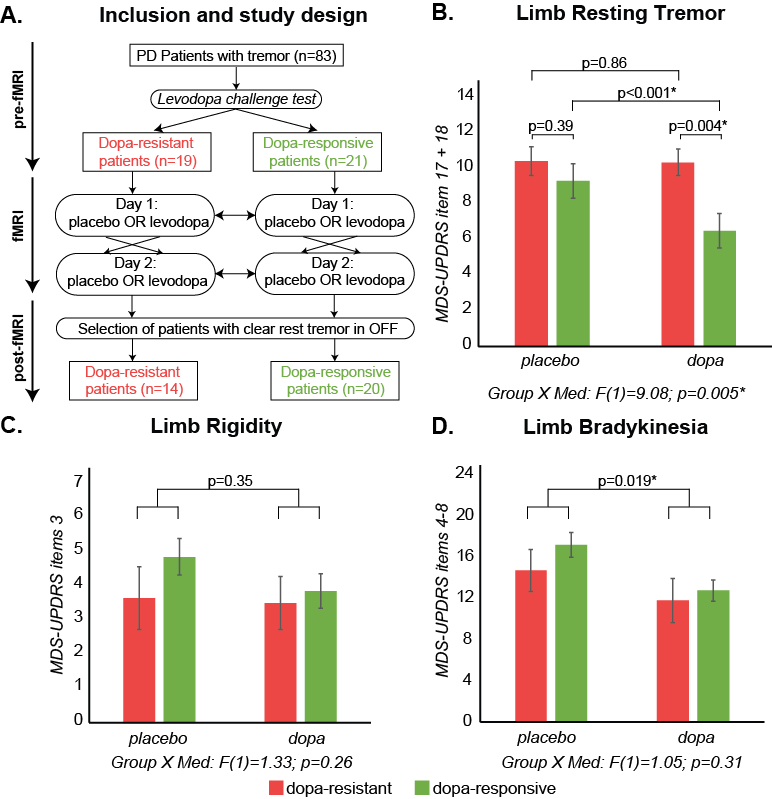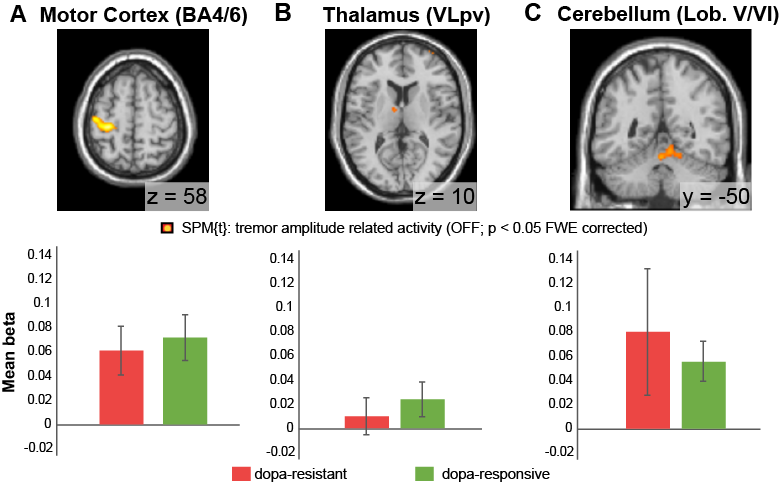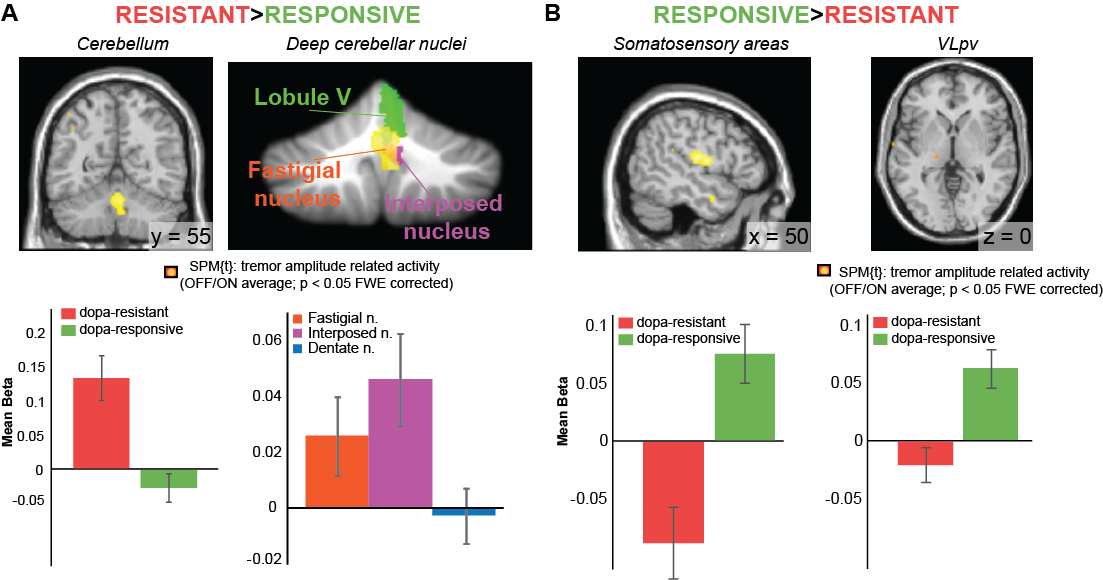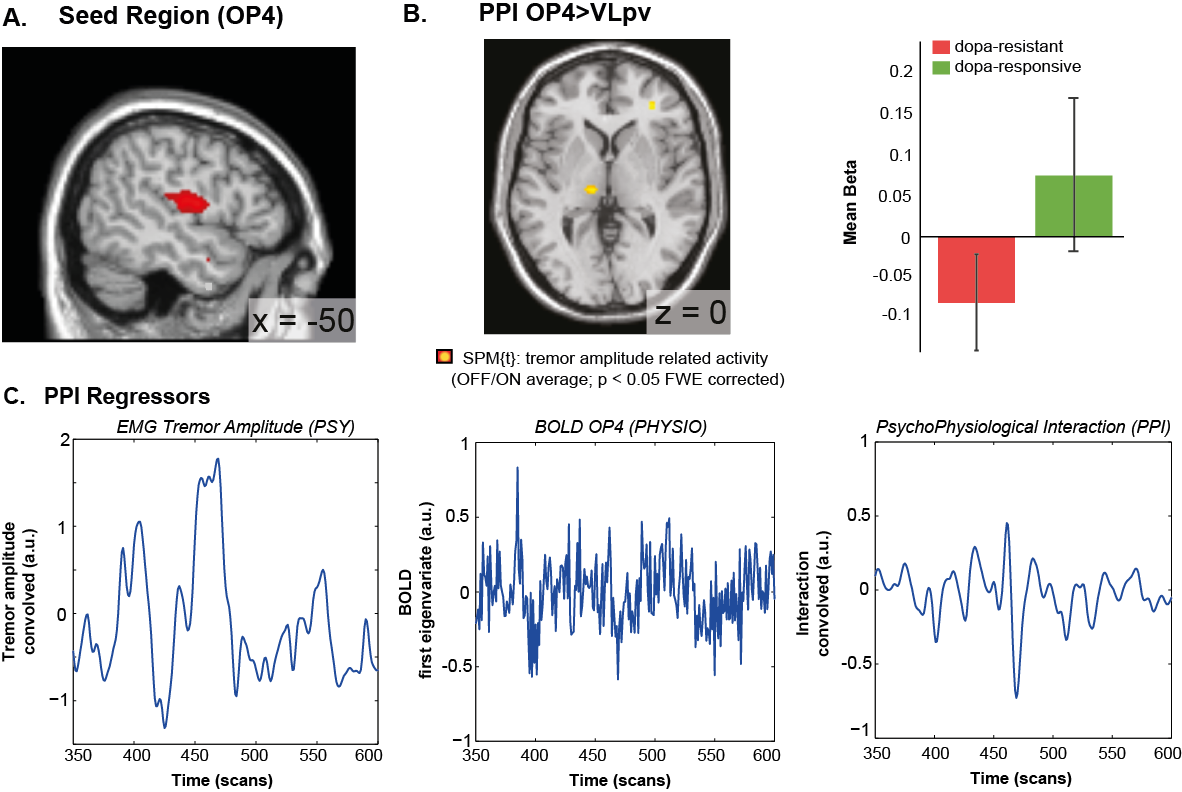Session Information
Date: Tuesday, September 24, 2019
Session Title: Tremor
Session Time: 1:45pm-3:15pm
Location: Les Muses Terrace, Level 3
Objective: To disentangle the cerebral mechanisms underlying dopamine-resistant versus dopamine-responsive tremor in Parkinson’s disease.
Background: Parkinson’s rest tremor is related to cerebral activity in both basal ganglia and a cerebello-thalamo-cortical circuit. Clinically, there is strong between-patients variation in the dopamine response of tremor. This observation has cast doubt on the idea that Parkinson’s tremor has a dopaminergic basis. Yet, it also raises the interesting possibility that inter-individual differences in tremor pathophysiology underlie this clinical heterogeneity. Previous work has shown that dopaminergic medication reduces Parkinson’s tremor by inhibiting tremulous activity in pallidum and thalamus, and this may explain dopamine-responsive tremor. Here we test the hypothesis that dopamine-resistant rest tremor may be explained by increased contributions of non-dopaminergic brain regions, such as the cerebellum.
Method: We performed a levodopa-challenge test in 83 tremulous Parkinson patients, and selected 20 patients with a markedly dopamine-responsive tremor (71% reduction) and 14 patients with a markedly dopamine-resistant tremor (6% reduction). The dopamine response of other motor symptoms was matched between groups. In all 34 patients, we used combined EMG-fMRI to quantify tremor-related brain activity on two separate sessions: after placebo or after 200/50 mg levodopa/benserazide. We compared tremor-related brain activity between groups and medication sessions.
Results: Both groups showed tremor amplitude-related brain activity in a cerebello-thalamo-cortical circuit. Dopamine-resistant tremor patients showed increased tremor-related activity in non-dopaminergic areas (cerebellum), whereas the dopamine-responsive group showed increased tremor-related activity in the thalamus and secondary somatosensory cortex (across medication sessions). Levodopa inhibited tremor-related thalamic responses in both groups, but this effect was significantly greater in dopamine-responsive patients.
Conclusion: Dopamine-resistant tremor may be explained by increased cerebellar and reduced somatosensory influences onto the cerebellar thalamus (VLpv), making this region less susceptible to inhibitory effects of dopamine.
To cite this abstract in AMA style:
MF. Dirkx, H. Zach, A. van Nuland, BR. Bloem, I. Toni, RC. Helmich. Cerebral differences between dopamine-resistant and dopamine-responsive Parkinson’s tremor [abstract]. Mov Disord. 2019; 34 (suppl 2). https://www.mdsabstracts.org/abstract/cerebral-differences-between-dopamine-resistant-and-dopamine-responsive-parkinsons-tremor/. Accessed April 2, 2025.« Back to 2019 International Congress
MDS Abstracts - https://www.mdsabstracts.org/abstract/cerebral-differences-between-dopamine-resistant-and-dopamine-responsive-parkinsons-tremor/




